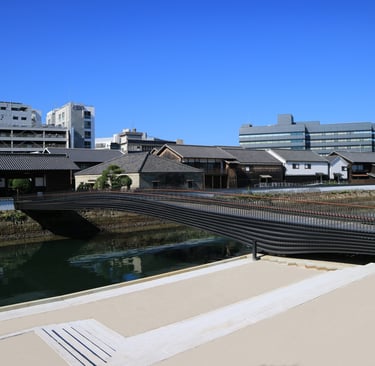Why Nagasaki Was the Only City Open to Foreign Trade During Japan’s Isolation Era
11/12/20252 min read




During Japan’s Edo period (1603–1868), the country adopted a strict isolation policy known as Sakoku, meaning “closed country.” Under this policy, almost all contact and trade with foreign nations were banned. However, one exception existed — Nagasaki. This port city was allowed to continue limited trade with specific foreign nations, making it Japan’s sole window to the outside world for more than two centuries.
The Background of Sakoku
In the early 17th century, Japan experienced growing foreign influence, particularly from European countries such as Portugal and Spain. Missionaries from these nations spread Christianity, which began to gain converts among Japanese people, including samurai and feudal lords. The Tokugawa Shogunate, which sought to maintain political stability, saw this as a threat to its authority.
Fearing that Christianity could lead to internal division and potential colonial control by Western powers, the shogunate decided to cut off relations with most foreign countries. In 1639, Japan officially entered the Sakoku era, closing its ports to the world and banning Japanese citizens from traveling abroad.
Why Nagasaki Was Chosen
Nagasaki was selected as the only port for foreign trade for several reasons. First, it was geographically well-suited — located far from the political center of Edo (Tokyo), it could be easily monitored and controlled by the shogunate. Second, Nagasaki already had experience dealing with foreigners, as it had been a major trading port since the late 1500s under the influence of Portuguese merchants and Jesuit missionaries.
In 1636, the artificial island of Dejima was constructed specifically to confine foreign traders — initially the Portuguese, and later the Dutch. This small, fan-shaped island became the official site for all international trade. By relocating foreign merchants to Dejima, the Tokugawa government could control interactions, inspect goods, and prevent the spread of Christianity.
Trade and Cultural Exchange
While most of Japan was closed to the world, Nagasaki remained a hub of international exchange. Through trade with the Dutch and Chinese, Japan imported knowledge, medicine, astronomy, and technology. The study of Western science, known as Rangaku (Dutch learning), flourished thanks to the limited contact allowed in Nagasaki.
This unique environment made Nagasaki not just a trade center but also a gateway for cultural and intellectual development during the isolation period.
The Legacy of Nagasaki’s Role
Even today, Nagasaki retains traces of its international past. The city’s blend of Japanese, Chinese, and European influences can be seen in its architecture, cuisine, and festivals. Dejima, now restored as a historical site, stands as a symbol of Japan’s complex relationship with the outside world — one of control, curiosity, and cautious exchange.
Nagasaki’s history as Japan’s sole trading port during Sakoku reminds us how this small city played an outsized role in shaping Japan’s path toward modernization and global engagement.
